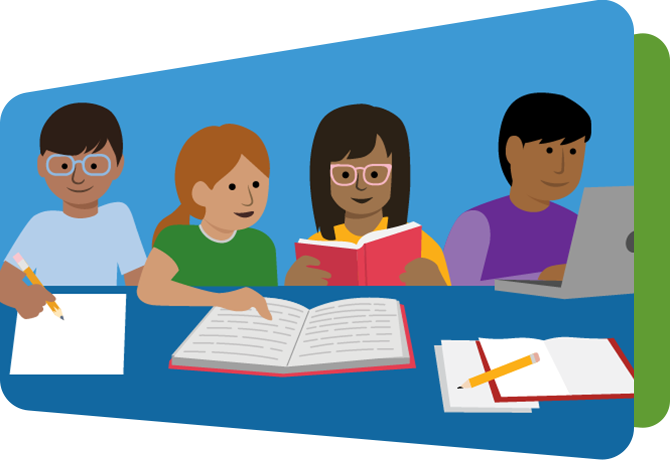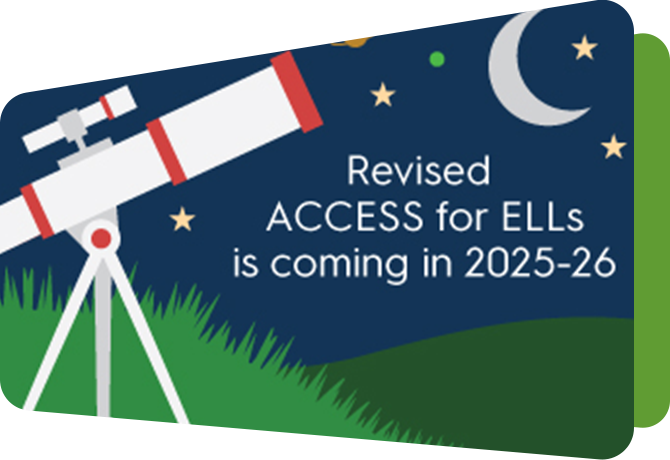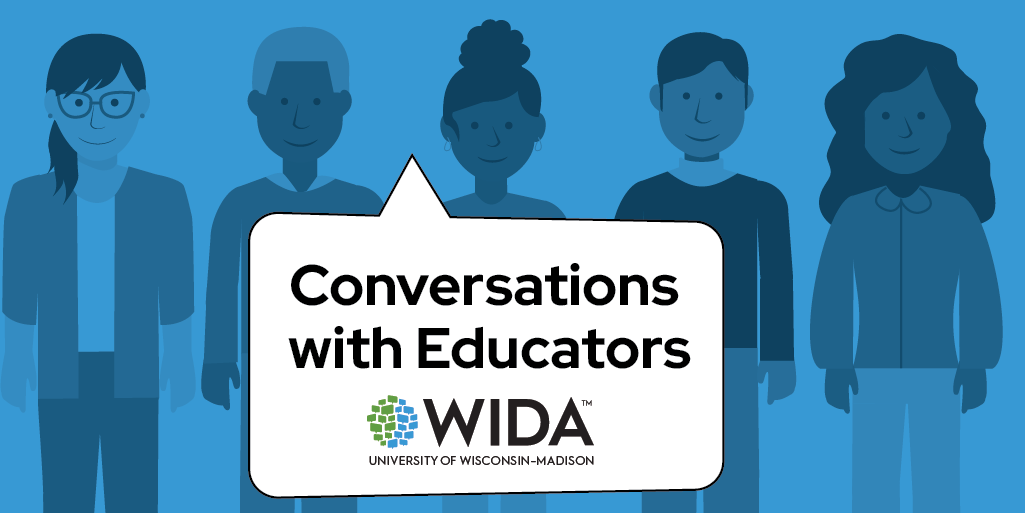Standards in Action
Learn from real classroom examples
This page brings to life the WIDA English Language Development (ELD) Standards Framework, 2020 Edition through classroom examples and videos that show how educators use the framework to support language development in multilingual learners (MLs). As you explore the videos, use the Standards in Action Video Guide and accompanying resources on this page to reflect on your own context and next steps.
Implementation of the ELD Standards Framework varies across K-12 classrooms and is shaped by content area, grade level and local context. The ELD Standards Framework helps educators prioritize and plan instruction for teaching multilingual learners that blends language development with academic content. No matter the setting, you can support multilingual learners in the classroom in the following ways:
- Engaging in content-centered language development
- Share responsibility for language development
- Create context-driven language practice
- Establish a student-centered learning environment
- Scaffold instruction across proficiency levels
Before getting started, review the components of the framework by visiting the ELD Standards Framework webpage.

Content-Centered Language Development
It is imperative that multilingual learners have the opportunity to build their language skills with and through grade-level content. Watch the following video in which Maria White highlights language features in the context of algebraic equations. You will notice Maria referencing the class anchor chart.
Maria White and her high school newcomer ELD class uncover the language for math at Aurora Central High School in Aurora, Colorado.
Another way to engage in content-centered language development is through Socratic seminars. In this Scaffolding Socratic Seminars handout, Karely Spence-Osorio, a sixth-grade English Language Arts teacher for multilingual learners in North Carolina, shares a strategy to scaffold Socratic seminars with both content and language in mind.
Shared Responsibility for Language Development
Educators share the responsibility of planning language learning for multilingual learners. This video shows how two high school ELD teachers work together to co-plan lessons for newcomer students in mixed-grade classes.
Maria White and Paulina Gudel co-plan for their high school ELD class. Click the Chapters icon ![]() to choose a chapter in the video.
to choose a chapter in the video.
Shared Responsibility for Language Development Video Transcript
Take a closer look at Maria and Paulina’s Unit Planning Template to support your instructional planning.
Context-Driven Language Practice
The first WIDA ELD Standard, Language for Social and Instructional Purposes, is used across all content areas. It reminds us to integrate opportunities for students to use their language skills to express who they are, connect with others and make sense of academic content.
In the following video, Maria explains how she planned a math lesson (WIDA ELD Standard 3) where students used all their linguistic resources to understand algebraic equations.
Maria White describes her planning process for her high school ELD class.
In this context-driven language practice handout, Jess Pulzetti, a middle school teacher in Arlington, Massachusetts, shares how she models language, gives students chances to practice and offers feedback.
Student-Centered Learning Environment
In student-centered classrooms, teachers create meaningful learning by bridging students’ strengths and experiences to academic content. In the next video, the principal, ELD teacher and students exemplify a student-centered learning environment created with these strategies in mind:
- Build on each other's strengths.
- Support each other using all languages to understand content.
- Connect language and content learning.
- Create a supportive, inclusive community.
Aurora Central High School staff and students emphasize the social aspect of learning and the importance of meaningful learning in context.
Thinking of ways to build a student-centered learning environment? Read the Amplifying Family Voice handout to hear how one educator amplifies students’ and families’ voices in her school community.
Scaffolding Instruction Across Proficiency Levels
All students should aim for the same learning goals with support based on their language proficiency level. The WIDA Proficiency Level Descriptors (PLDs) and the WIDA Language Charts help connect the WIDA ACCESS summative assessment to lesson planning by showing how language looks at various levels.
Educators can use these tools to plan support across proficiency levels. In the following video, Lanisia Scarbrough, a kindergarten multilingual learner teacher in Boise, Idaho, reflects on her content using the WIDA Proficiency Level Descriptors.
Lanisia Scarbrough demonstrates how the WIDA Proficiency Level Descriptors (PLDs) serve as a foundation for planning scaffolds that meet students’ language development needs.
The Standards in Action: Reflecting With Proficiency Level Descriptors resource gives additional examples of how educators have used the PLDs to inform their scaffolding practices across four different classroom contexts.
The Language Charts can also be used to do this work. Learn more about the WIDA Language Charts at the bottom of the Revising ACCESS webpage.








